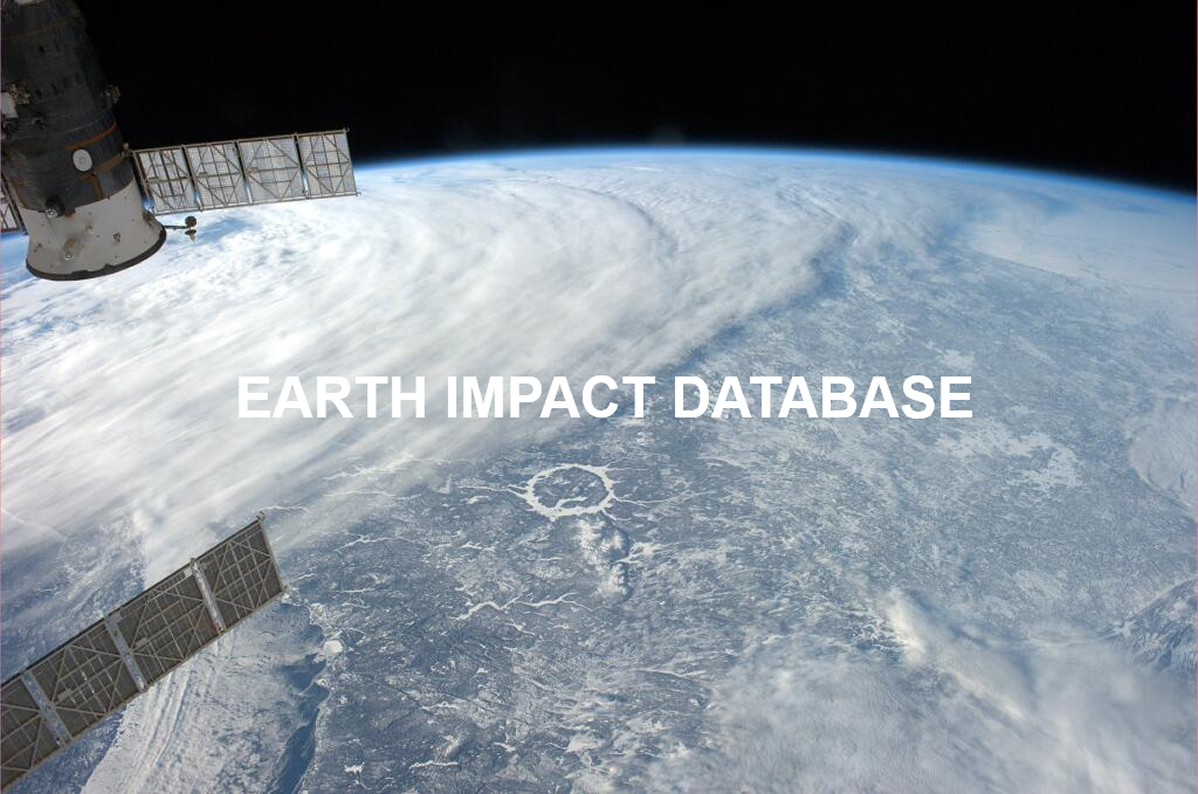Please review criteria below before reporting a possible impact crater to PASSC. We would be happy to answer any questions.
Criteria for the identification of an impact structure
The principal criteria for determining if a geological feature is an impact structure formed by the hypervelocity impact of a meteorite or comet are listed below. The criteria can be divided into megascopic (overview – bird’s eye / satellite scale), macroscopic (can be seen easily seen with the naked eye) and microscopic (requires a microscope to see) features, as follows:
1. Presence of shatter cones that are in situ (macroscopic evidence).
2. Presence of multiple planar deformation features (PDFs) in minerals within in situ lithologies (microscopic evidence).
3. Presence of high pressure mineral polymorphs within in situ lithologies (microscopic evidence and requiring proof via X-ray diffraction, etc.).
4. Morphometry. On other planetary bodies, such as the Moon and Mars, we rely on the shape of the impact structure to determine its presence and type (simple versus complex, etc.). This is a megascopic quality (i.e., too big to be seen unaided by the human eye, thus requiring remote sensing, aerial photography, detailed mapping of multiple outcrops to assemble and view the typically km- or multiple km-size structure). On Earth, recognizing impact structures solely by their morphometry is complicated by two factors: (a) weathering, erosion, burial processes and tectonic deformation can obscure and/or destroy the original shape; (b) certain terrestrial features generated by means other than impact can have comparable circular form (e.g., volcanoes, salt diapirs, glacigenic features), such that a circular structure alone is not sufficient to claim impact structure status. Some buried craters have been revealed solely by geophysical techniques, although drill core is typically required to reveal macro- and microscopic evidence to prove an impact origin.
5. Presence of an impact melt sheet and/or dikes, and impact melt breccias that were generated due to hypervelocity impact (macroscopic). These bodies typically have a crustal composition derived by the fusion of target rocks (i.e., there is no mantle contribution to the melt). Such melts may be contaminated by meteoritic (projectile) components (the latter requires specialized geochemical analysis to detect the projectile components). Melt sheets may be overlain by so-called fallback breccias (referred to as "suevite" by some workers), and material blasted out of the crater may form ejecta blankets about the original central cavity. For large impact events, ejecta can be distributed globally. Impact melt sheets are recognized by careful mapping and rock sampling followed by microscopy and geochemical analysis.
6. Pseudotachylyte and Breccias: Pseudotachylyte is a rock type generated by faulting at either microscopic or macroscopic scales. However, pseudotachylytes are also associated with seismic faulting due to endogenic processes (e.g., earthquakes due to isostatic rebound and plate tectonics), so they are not exclusively impact generated. However, in association with features listed above, they can be a contributory criterion. Pseudotachylyte associated with impact structures may form in radial and concentric fault systems that help to define the megascopic structure of the crater. Pseudotachylytes can be included in a family of rocks referred to as breccias. Many different types of breccia can be developed as part of the impact process (including impact melt breccias listed in (5) above), but breccias can also form by endogenic processes. The interpretation of breccias therefore requires considerable care and experience. Moreover, they should not be considered diagnostic of impact, but rather contributory evidence.
In terms of relative importance, it is generally considered that criteria 1-3 above are definitive (they all relate to the passage of a shock wave through rock and resulting modification processes), with contributory evidence being added by 4-6 (which result from secondary effects, such as gravitationally driven crater modification). For buried structures that cannot be directly accessed, but are well-preserved as revealed by detailed geophysical techniques (especially seismic data), some workers consider this as strong evidence in favour of an impact origin. Normally, buried craters are verified by drilling and sampling the material directly for evaluation using criteria 1-3 above.
If you have reviewed the above criteria and would still like to report a crater to the Data Manager, please fill out the following form: Report a Crater
